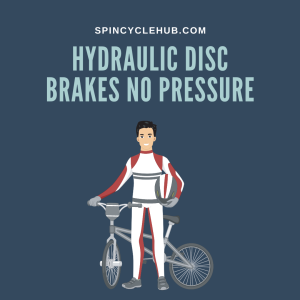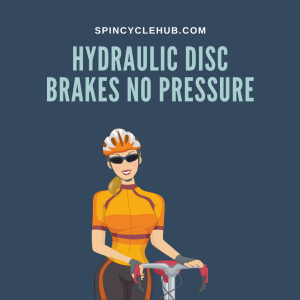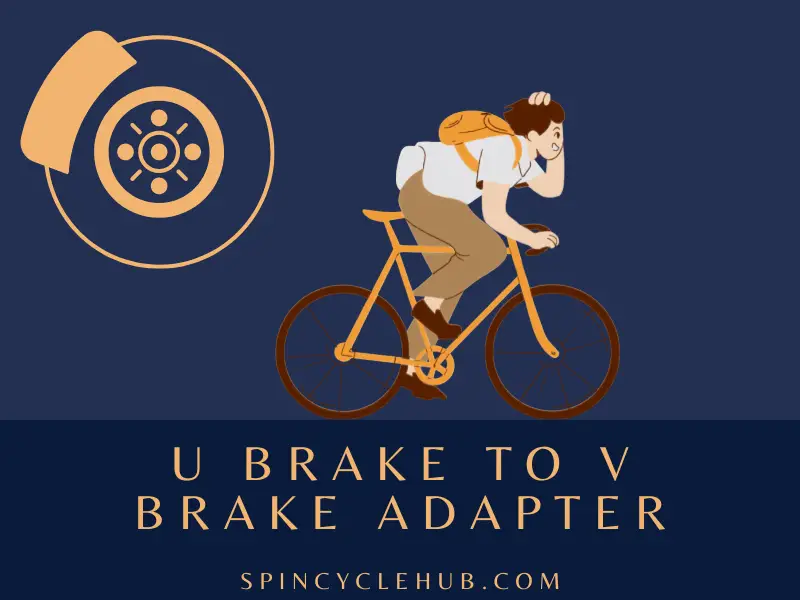Introduction
Picture this: you’re all geared up, ready to embark on an exhilarating bike ride, only to find out that your hydraulic disc brakes have lost all their pressure. Frustrating, isn’t it? Don’t worry, though, because in this article, we’re going to unravel the mystery behind hydraulic disc brakes losing pressure and provide you with practical solutions to get you back on track.
Understanding Hydraulic Disc Brakes
Let’s start with a quick overview of how hydraulic disc brakes work. These braking systems are widely popular among cyclists due to their outstanding stopping power and precise modulation. Unlike their mechanical counterparts, hydraulic disc brakes rely on fluid pressure to transmit force from the brake lever to the brake caliper, resulting in powerful and controlled braking performance. So, it’s crucial to maintain the proper fluid pressure for optimal brake function.

Common Causes of Hydraulic Disc Brakes Losing Pressure
There are several common culprits when it comes to hydraulic disc brakes losing pressure. Let’s explore them one by one:
Air in the Brake Lines
Air bubbles can find their way into the brake lines, compromising the hydraulic system’s efficiency. This can happen during installation, maintenance, or due to a leak in the system. When air is present, it compresses more easily than brake fluid, resulting in a spongy brake lever feel and reduced stopping power.
Brake Fluid Leaks
Leaks in the brake system can occur at various points, such as the brake lever, caliper, or hoses. These leaks can lead to a loss of brake fluid, resulting in a drop in pressure. It’s essential to inspect your brake system regularly for any signs of leaks, such as fluid dripping or wet spots around the brake components.
Contaminated Brake Fluid
Over time, brake fluid can become contaminated with dirt, moisture, or debris. This contamination can degrade the fluid’s performance and lead to a loss of pressure. Regularly replacing the brake fluid and ensuring a clean system can help prevent this issue.
Worn Brake Pads
Brake pads wear down with use, and if they become excessively worn, they can reduce the pressure applied to the rotor. This can result in diminished braking performance and a loss of pressure. Inspecting and replacing worn brake pads is essential to maintain optimal brake function.
Damaged or Worn Seals
The hydraulic system relies on seals to prevent fluid leaks and maintain pressure. However, over time, these seals can become damaged or worn, leading to pressure loss. Inspecting and replacing damaged or worn seals is crucial for restoring proper brake function.
Troubleshooting Hydraulic Disc Brakes with No Pressure
Now that we understand the common causes let’s explore the steps to troubleshoot hydraulic disc brakes with no pressure:
Step 1: Check for Visible Leaks
Inspect your brake system thoroughly, looking for any visible leaks or signs of fluid loss. Pay close attention to the brake lever, caliper, and hose connections. If you notice any leaks, address them accordingly by tightening connections or replacing damaged components.
Step 2: Bleeding the Brake System
Bleeding the brake system helps remove air bubbles and ensures optimal fluid pressure. Follow the manufacturer’s instructions or seek professional help to perform a proper brake bleed. This process involves purging air from the system by adding fresh brake fluid and cycling it through the brake lines.
Step 3: Inspecting and Replacing Brake Pads
Inspect your brake pads for signs of excessive wear. If they are worn down beyond their recommended thickness, it’s time to replace them. New brake pads will provide better contact with the rotor, restoring pressure and improving braking performance.
Step 4: Examining and Replacing Seals
Carefully examine the seals in your brake system for any signs of damage or wear. Damaged seals should be replaced promptly to restore the integrity of the hydraulic system. Consult your brake manufacturer’s guidelines or seek professional assistance for seal replacement.
Step 5: Flushing and Replacing Brake Fluid
Regularly flushing and replacing brake fluid is crucial for maintaining optimal brake performance. Over time, brake fluid can become contaminated, leading to a loss of pressure. Follow the manufacturer’s recommendations for fluid replacement intervals and use high-quality brake fluid suitable for your brake system.
Tips for Preventing Loss of Hydraulic Disc Brake Pressure
Prevention is always better than cure. Here are some essential tips to help you prevent a loss of hydraulic disc brake pressure:
– Regular maintenance and inspection: Schedule regular maintenance checks and inspections to identify and address any potential issues before they worsen.
– Proper bleeding procedures: Follow the correct bleeding procedures when performing brake maintenance or replacing components to ensure the removal of air bubbles from the system.
– Using high-quality brake fluid: Choose a high-quality brake fluid recommended by your brake manufacturer to ensure optimal performance and longevity.
– Checking for wear and tear: Routinely inspect brake pads, rotors, and seals for signs of wear or damage. Replace any worn or damaged components promptly to maintain proper pressure.

Conclusion
Losing pressure in your hydraulic disc brakes can be a frustrating experience, but understanding the common causes and following the troubleshooting steps can help you get back in action. Regular maintenance, proper bleeding procedures, and attention to wear and tear are key to maintaining optimal brake performance. Remember, if you’re unsure or uncomfortable with performing brake maintenance, it’s always best to seek professional help to ensure your safety on the road or trail.
Frequently Asked Questions (FAQs)
Q: How often should I bleed my hydraulic disc brakes?
A: The frequency of bleeding depends on various factors such as brake usage, conditions, and manufacturer recommendations. Generally, it’s recommended to bleed hydraulic disc brakes at least once a year or when you notice spongy brake lever feel.
Q: Can I use any type of brake fluid for my hydraulic disc brakes?
A: It’s crucial to use brake fluid that is compatible with your brake system. Refer to your brake manufacturer’s guidelines to ensure you select the correct type of brake fluid.
Q: What are the signs of worn brake pads?
A: Signs of worn brake pads include reduced braking performance, increased stopping distances, squealing or grinding noises, or visible thinning of the pad material.
Q: Is it possible to fix hydraulic disc brakes without professional assistance?
A: Some basic maintenance tasks, such as pad replacement or minor adjustments, can be done by experienced cyclists. However, if you’re unsure or facing complex issues, it’s advisable to seek professional assistance to ensure proper repairs.
Q: How long do hydraulic disc brakes typically last?
A: The lifespan of hydraulic disc brakes can vary depending on factors such as usage, maintenance, and riding conditions. With proper maintenance and regular inspections, they can last several years before needing significant repairs or replacements.
With these troubleshooting tips and preventive measures, you can overcome the challenge of hydraulic disc brakes losing pressure and enjoy smooth and reliable braking performance on your biking adventures.
- Link to a video tutorial on bleeding hydraulic disc brakes: This video provides a step-by-step guide on how to properly bleed hydraulic disc brakes, which complements the troubleshooting steps mentioned in the article.
- Link to a reputable online store for high-quality brake fluid: This online store offers a wide range of high-quality brake fluids that are suitable for various hydraulic disc brake systems. Readers can explore and purchase brake fluid that meets their specific requirements.
Watch this one,
Video Credits – Berm Peak
DOWNLOAD THIS ARTICLE :Click Here
You May Also Like
-
Removing a Presta Valve Core: Mastering the Art of Bicycle Maintenance
-
Why Magnesium Alloy Wheels are a Game-Changer for Mountain Biking



